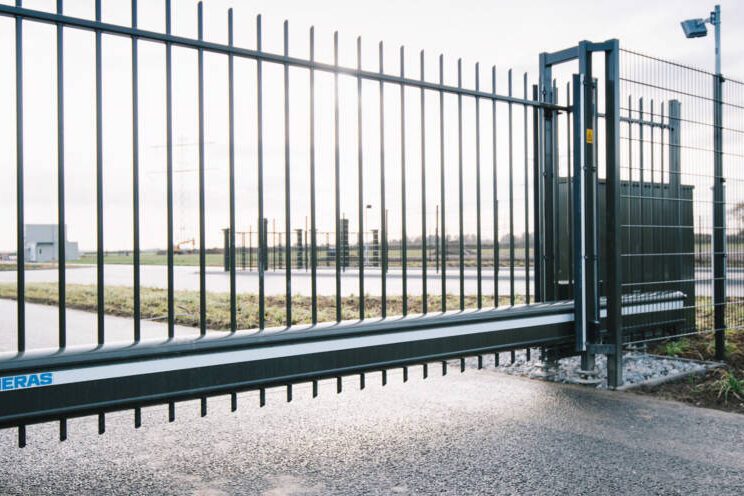Joseph Clarke, Assistant Editor of Security Buyer examines the Oil & Gas landscape, exploring regulations, technology, the threat landscape, and proposes the best solutions to secure the future
Security within the Oil & Gas industry is of paramount importance, as the sector stands as a prime target for an extensive spectrum of threats, encompassing both tangible and digital perils. Security managers entrenched in this field confront an intricate and perpetually shifting landscape, necessitating a profound comprehension of the industry’s idiosyncratic challenges. In this article, we embark on a meticulous exploration of the pivotal facets that constitute security management within the Oil & Gas sector. Our aim is to furnish security practitioners with in-depth technical insights, grounded in a pragmatic understanding of the industry’s nuances. Throughout this exposé, we shall make pertinent references to specific security systems that hold utmost relevance within this domain.
The Oil & Gas industry, intrinsic to global energy production and supply, faces a host of threats that transcend conventional security paradigms. These challenges encompass physical vulnerabilities like sabotage, theft, and environmental disasters, which can have catastrophic consequences. Simultaneously, the digital realm presents an evolving panorama of cyber threats, capable of compromising critical infrastructure and sensitive data. As such, security managers must navigate this multifaceted arena, integrating cutting-edge security systems and practices to safeguard not only physical assets but also the digital infrastructure that underpins the industry’s operations. Through a meticulous examination of the core elements of security management, we endeavour to equip security professionals with the knowledge and tools necessary to mitigate risks effectively and ensure the resilience of their operations in the face of an ever-evolving security landscape.
Threat Landscape Analysis
The threat landscape within the Oil & Gas industry is characterised by its intricate and multifaceted nature. In the realm of physical security, the spectrum of potential threats spans from acts of vandalism and deliberate sabotage to the theft of valuable resources. These incidents can not only result in significant financial losses but also pose a substantial risk to personnel safety and the environment.
Equally pressing are the digital perils. Cyber threats loom large, presenting an array of potential consequences that extend from the compromise of sensitive data to the crippling of critical infrastructure. The ramifications of a cyberattack on the Oil & Gas sector can reverberate globally, affecting energy supplies and national security.
To effectively address this amalgamation of threats, security managers must harness the power of advanced threat detection and monitoring systems. Within this context, notable solutions have emerged to fortify security measures. Siemens’ SICLOCK, for instance, offers precise time synchronisation capabilities, ensuring accurate event timing, which is crucial for coordinating security responses and forensic investigations. Concurrently, Honeywell’s Advanced Threat Intelligence Exchange (ATIX) furnishes real-time threat analysis, empowering security teams with the timely information required to respond swiftly and proactively to emerging threats.
In the subsequent sections of this article, we will delve deeper into the strategies and systems available to security managers within the Oil & Gas industry, providing a comprehensive overview of the tools and practices essential for safeguarding critical assets against a diverse array of security challenges.
Regulatory Compliance
Within the Oil & Gas industry, a complex web of regulations and standards is in place, encompassing security in all its dimensions. Compliance with these regulatory frameworks is essential, as non-compliance can result in severe legal and operational repercussions.
One of the cornerstones of security regulations in this sector is the American Petroleum Institute’s Recommended Practice 780 (API RP 780). This document provides comprehensive guidelines for assessing security vulnerabilities specific to the Oil & Gas industry, offering a vital roadmap for security managers to enhance their security posture.
In the digital realm, compliance with cybersecurity standards is paramount. The National Institute of Standards and Technology (NIST) Cybersecurity Framework and ISO 27001 provide robust and widely acknowledged frameworks for securing information and digital assets within the industry. These standards address the critical need to protect sensitive data and digital infrastructure from the ever-evolving landscape of cyber threats.
To navigate this regulatory maze effectively and ensure compliance, security managers can deploy Governance, Risk, and Compliance (GRC) solutions. A notable example is RSA Archer, which streamlines the management of regulatory adherence and risk assessment. These GRC solutions enable security teams to maintain a proactive stance, ensuring that the organisation remains compliant with the evolving legal landscape while effectively managing associated risks.
In the forthcoming sections, we will delve further into the practical steps that security managers can take to implement and maintain compliance with these rigorous standards, enhancing security measures and reducing legal liabilities within the Oil & Gas industry.
Read the full feature in our latest issue here.
Never miss a story… Follow us on:
Security Buyer
@SecurityBuyer
@Secbuyer
Media Contact
Rebecca Morpeth Spayne,
Editor, Security Portfolio
Tel: +44 (0) 1622 823 922
Email: editor@securitybuyer.com









